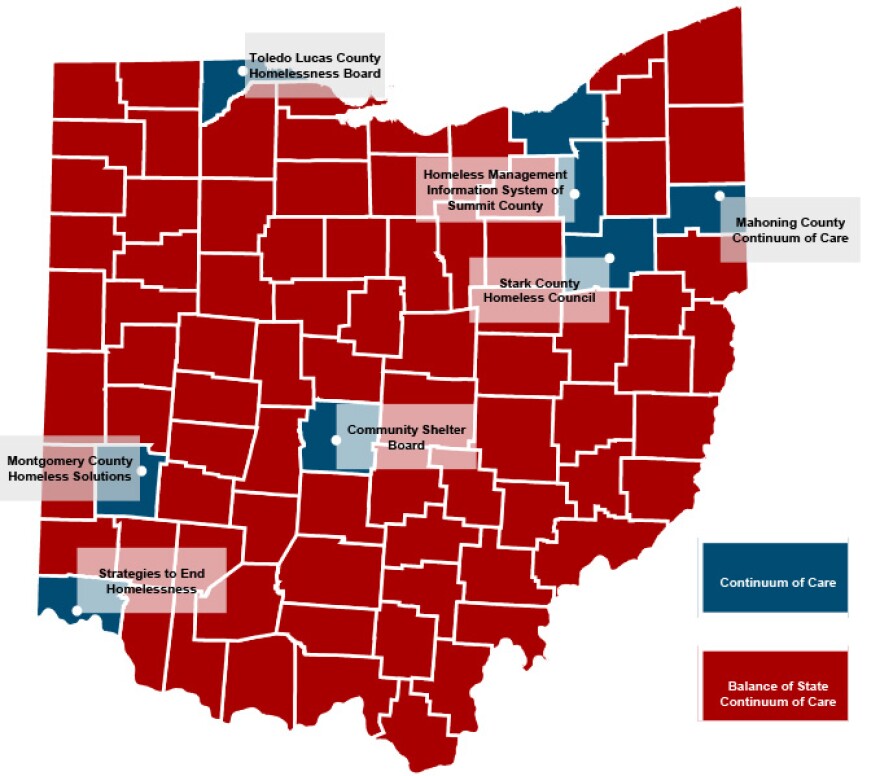Rising rents are finally beginning to slow after nearly two years of sharp increases.
Rents only rose by 2% at the start of this year – the lowest increase in the last 20 months, . And, while major metros often dominate the conversations around housing, numbers show that rent in rural communities is out of reach for many.
A report by the National Low Income Housing Coalition found that the biggest gaps between average rent and average wages happened in – like Athens, Licking and Morrow.
And the problems–and solutions–are different for those parts of the state.
“They do not have wages that are high enough to be able to afford a home in those communities, and that really puts pressure on the market and their ability to find something that is truly affordable for them,” said Amy Riegel, executive director of the Coalition of Homelessness and Housing in Ohio.
Her group is pushing the state to apportion American Rescue Plan Act funds to address the affordable housing shortage.
Riegel said right now, many state and federal tax credits for housing go toward building projects with around 40 units or more. But most of the time, small towns need significantly fewer units to address their needs.
“It can make it harder to just fill in those teeny tiny gaps. But, those teeny tiny gaps feel huge within a small community,” Riegel said.

Rural areas are still feeling the impact of the pandemic
Housing support systems in those areas were hit hard by the pandemic. Small towns often rely on local churches, businesses and community organizations as a safety net, Riegel said, and COVID-19 economically devastated many of those.
Community Action Agencies across the state were given emergency pandemic rental assistance funds to help those struggling to afford housing. But, now, that pandemic assistance is drying up.
Riegel said these dollars were important in helping to prevent rural homelessness. Without the funding, she said many communities are beginning to see the first indicators of housing insecurity.
“We're starting to see those eviction numbers really start to build back up again. In some areas, we're seeing eviction numbers that are higher than the pre-pandemic levels,” she said.
Beyond ARPA funds, legislators propose statewide solutions
Ohio had one of the nation's largest populations of unhoused people in rural areas last year, according to a recent report from .
More than 4,000 Ohioans experiencing homelessness were located outside of the state’s eight most populous counties.
Some state legislators want to curb those numbers. Rep. Gail Pavliga (R-Portage County) and Rep. Lauren McNally (D-Youngstown) have introduced a measure to address the shortage of a quarter of a million affordable housing units across the state.
"Those teeny tiny gaps feel huge within a small community.”Amy Riegel, executive director of the Coalition on Homlessness and Housing in Ohio
The newly introduced bill aims to create 13,000 affordable housing units across the state in the next six years through a housing tax credit.
While funding is important, Riegel said it’s also crucial to get community input when addressing rural homelessness in order to create housing that reflects its values.
“The housing should be appropriate to the community that we're trying to assist,” Riegel said. “So that it blends in, and it’s part of the fabric of what brings them together.”

